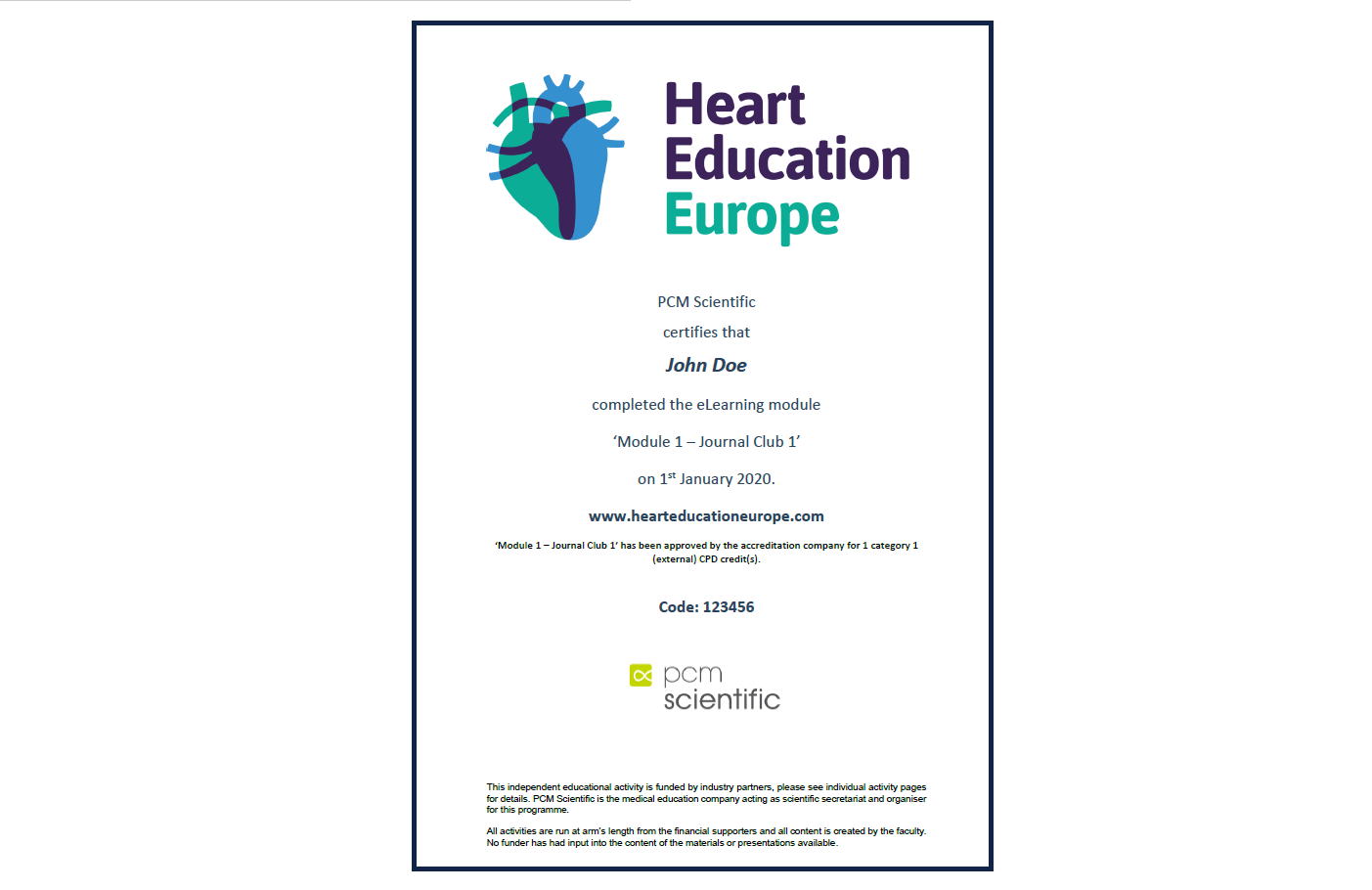
Improving
|
Exploring the latest emerging data with the paper’s author
Free-to-access digital education to learn at your own convenience
Examine complex issues in real-life applications
Network with leading experts and like-minded cardiology peers
Register for free-to- access materials anywhere, any time! Sign-up to our newsletter to be notified of live educational activities
Save your progress if you are unable to complete it in one sitting and revisit completed modules anytime to refresh your memory on your chosen topics and attend our live events to stay abreast of the latest emerging clinical data
For educational modules where accreditation is applicable, once you complete the module, submit the feedback form. A certificate confirming module completion will then be sent to the email address provided on the feedback form

CPD Points and CertficateContinuing Professional Development (CPD) are learning activities professionals engage in to develop and improve their abilities. CPD enables learning that is beyond mandatory training with different methodologies such as workshops, events, e-learning programs and more. Earn more CPD points here |